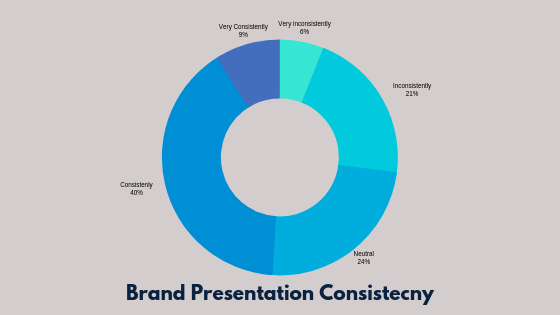Earlier this year following a strategy conversation during Casino Marketing Boot Camp, one attendee could not believe how blown away she was. “We’ve been doing this all wrong,” she remarked.
Her realization is widespread. Many confuse strategy with tactics, often using the terms interchangeably. Additionally, because a good majority of any marketer’s day involves managing tactics and projects, we can usually get lost in the process and lose sight of the goals we desire.
I like to distinguish strategy from tactics by using a travel analogy. A strategy is a destination, and tactics are how you’re going to get there. While your travel plans may change – you may opt for a road trip instead of air travel – your destination doesn’t (unless there is a sound reason).
“Strategy without tactics is the slowest route to victory. Tactics without strategy is the noise before defeat.”
In The Art of War, Sun Tzu wrote, “Strategy without tactics is the slowest route to victory. Tactics without strategy is the noise before defeat.” Using the travel analogy. If you have a destination but no idea how you’re getting there, you’ll never get there. Conversely, the availability of transportation doesn’t necessarily get you anywhere if you don’t have a destination in mind.
So how do you set a destination for your brand?
Think long-term. Think holistically. A strong brand strategy will encompass all parts the company and should include three core elements: purpose, consistency, and emotion.
 Purpose. Why you exist, or your reason for being, must be intentionally expressed. An excellent way to discover your purpose is Simon Sinek’s Golden Circle. Almost every company can quickly answer the what of their brand: what they sell or provide in terms of goods and services. Most can also explain how. How do we do what we do differently? For some, it’s fast, free delivery. For others, it may be frictionless purchasing (like Zappos). But few are ready to answer why. Why is not about money. Why is about your reason for existence. Non-profits must be able to know this if they are to survive, but for-profit businesses seldom have a fully-expressed purpose.
Purpose. Why you exist, or your reason for being, must be intentionally expressed. An excellent way to discover your purpose is Simon Sinek’s Golden Circle. Almost every company can quickly answer the what of their brand: what they sell or provide in terms of goods and services. Most can also explain how. How do we do what we do differently? For some, it’s fast, free delivery. For others, it may be frictionless purchasing (like Zappos). But few are ready to answer why. Why is not about money. Why is about your reason for existence. Non-profits must be able to know this if they are to survive, but for-profit businesses seldom have a fully-expressed purpose.
Consistency. If you look back at your brand and feel like “it’s all over the place,” then you know why consistency is so important.
In a benchmark study by Demand Metric, 40% of respondents indicated their brands were presented “consistently.” On the surface, that’s not bad news. Unfortunately, the goal should be a “very consistent” presentation, and only 9% indicated such. Worse is that the vast majority were anywhere from neutral to very inconsistent.
The study further shows those who report that their brands are consistently presented are three to four times more likely to enjoy excellent brand visibility than those in the inconsistent or neutral segments. If brand visibility is a goal, then a consistent presentation is non-negotiable.
An easy tool to implement to aid in gaining consistency is the brand style guide. When guardrails are not in place, the brand will veer off course. Inconsistencies do not generally happen to harm, but they can. These shortcuts are often taken in the name of expediency. Brand style guides provide boundaries while also helping to regulate the use of brand iconography and language. When consistency is essential, someone has to take the lead and manage the brand.
Emotion. Consumers buy with their hearts even if they tell you they buy with their wallets. The emotion that connects with consumers has a place in their hearts. Years ago, there was a book that grabbed my attention. Emotional Branding by Marc Gobe opened my eyes to the truth in the brand. Branding wasn’t about great creative (though that helps); it was about how we can (and should) connect to consumers. Written in a pre-social media age, it predicted the consumer empowerment that currently exists for all brands.
We all consider ourselves logical beings. We look at the facts, make the proper evaluations, and then act. We make several decisions based on gut instinct or emotion. Malcolm Gladwell’s Blink argues that these types of quick gut-level decisions save us time and trouble. The use of emotion guides consumers to make these quick decisions when those emotions resonate with them. It is the emotion that creates a long-term connection between the consumer and the offering. Brands like Apple use emotion to separate their products from the rest. Under Steve Jobs’ leadership, Apple recognized that we needed technology, but we desired to be part of a revolution, and so, it was born.
Now you’re ready to begin building your brand strategy.
Consider your business goals as the basis for your brand strategy. For instance, new entries hope to capture new customers (perhaps stealing from competitors) while existing businesses hope to hold on and continue growing. There are two destinations for each of these businesses, and their brand strategies should reflect them.
It is an obvious choice, though a mistake, to leave the brand strategy to the marketing team. But a strong brand strategy cannot happen within the confines of the marketing department. A sound strategy must have internal alignment. That means bringing in the departments that will play a key role: product, operations, HR, R&D, and executive leadership.
Facilitating a workshop to answer critical questions will guide your business and brand toward its goals.
- Short and long-term goals.
- Revenue and growth goals. Whose expectations are you trying to meet?
- Entering new markets? Developing new offerings? Enhancing the current offerings?
- Do you have the right staffing to achieve the goals? How does recruiting impact the goals? Do you have the proper organizational structure?
- How will resource allocation contribute to the achievement of your goals?
Then, understand your target customer, the competition, and the unique selling proposition only you can provide. High growth, high-profit firms have clearly defined targets. Experienced researchers will help you understand the strengths and weakness of your brand as well as your competitive set. Appropriate questioning can also uncover risks and identify the language cues your target will respond to.
Next step is to develop your brand positioning and messaging strategy. These three to five sentences will ground your efforts in the reality of your customer’s mindset. The positioning will be the promise you make to customers, which will determine how you operate to deliver on that promise day in and day out. But it should also be somewhat aspirational to that you can be continually reaching for your goal. Your message will be the translation of your positioning in the communications channels you include. It’s critical that you never lose sight that your communications must resonate with employees and partners as well as customers. So, while your positioning is at the core, your message may vary due to the interests of the various stakeholders. Your message strategy must address all relevant audiences.
Finally, you have reached the surface of the iceberg known as your brand, and you’re ready to solidify your brand name, logo, and all the visual cues.
Brand strategy is about the promise you will make and deliver. When adequately developed and infused into the organization, it will guide the choices the company makes. It is what your company stands for.



Recent Comments